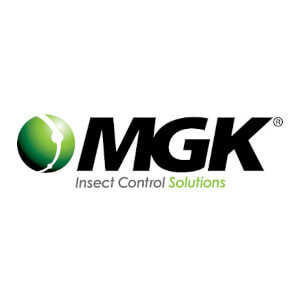Insect pests are more than just an inconvenience for dairy producers; they are devastating to the herd in the form of weight and production losses. The key to insect control is integrated pest management.
Common Pests in Dairies
Three pests commonly encountered in dairy facilities are flies, lice, and mosquitoes:
- House Flies are the most encountered pests in our industry because they live closely with confined animals and will feed on almost any organic matter. Irritation caused to cattle from flies can cut into your bottom line with losses in total body weight and production. Other filth flies that could impact your herd include stable flies, horn flies, and face flies.
- Lice on beef cattle is a common issue for producers and it gets worse in the winter. Louse control is important to maintaining health and growth through the colder months.
- Mosquitoes are one of the most detrimental insects to humans and livestock. Large populations can cause irritation and extensive blood loss to livestock.
Failure to effectively control these insect pests can lead to expensive problems:
- House flies can cause a total decrease of 3.3% in milk production.1
- Dairy producers experience a decreased lactation rate of approximately 16% due to the presence of horn flies on cows.2
- The economic impact of lice has been difficult to assess,3 but United States livestock producers lose approximately $125 million per year due to cattle lice, as estimated by the USDA.4
Integrated Pest Management & Control
Simply put, integrated pest management (IPM) is the combination of several insect control measures to combat a pest population, including sanitation, physical barriers, cultural control methods, and insecticides.
Facility Management
Sanitation
- Filth fly control can be easily accomplished by eliminating water and/or food.
- Remove sources of food and do away with sources of moisture.
- Reduce the amount of organic material present, including manure, spilled feed, and carrion.
- Spread and dry manure to reduce the moisture content and eliminate fly development. Aim to reduce the moisture content to less than 30%.
Cultural Control
Cultural controls are practices that reduce insect establishment or survival. If cultural control is not an option in a specific area of the facility, that may indicate a target area for insecticide application.
- Implement fans in barns or animal shelters to make it difficult for flies and mosquitoes to land.
- Manage vegetation through mowing and tree pruning which reduces the available areas that flies seek harborage.
Mechanical Control
Mechanical, or physical, control options include those that block out insect pests.
- Install screens to windows to eliminate large areas of insect intrusion.
- Fly traps, sticky traps, or fly zappers can be used for control in small areas, such as an office.
Biological Control
Biological control of insects involves using natural predators of target insects to manage the population.
- Small parasitic wasps may be released around animal production systems. The wasps will seek out fly pupae, insert their eggs, and the developing wasps will complete their development using the fly as a host.
- Take care when applying premise applications of insecticides as they can negatively affect insects intended for biological control.
Chemical Control Options
Insecticides are an effective and important line of defense against fly infestations and due to the nature of organic production, we must be diligent with applications. Always follow label recommendations and be aware of product application methods and restrictions.
Plant-based pyrethrin insecticides are excellent options for fly control on or over livestock animals. Pyrethrins deliver a fast knockdown and can be applied on-animal and over-animal through misting or fogging systems. In addition to over-animal applications, apply insecticides to the premise, or soil areas, around a barn to target fly breeding and resting areas.
- Evergreen® Pyrethrum Concentrate
Use when you need a quick knockdown of flying insects. OMRI listed for organic production. - PyGanic® Specialty
Use when you need the flexibility to use a product on- or over-animal. OMRI listed and meets NOP requirements for organic production.
Final Tip for Success: Class Rotation
To see how MGK can help maximize the results of your IPM program, contact our tech services team or reach out to your local sales representative.
References Cited:
- Freeborn, S.B., Regan, W.M. and Folger, A.H. (1925) The relation of flies and fly sprays to milk production. J. Econ. Entomol., 18: 779-790.
- Blezinger, S. 2017. Causes, costs and effects of flies in beef cattle. Progressive Cattleman, February 24, 2017.
- Townsend, L. 2000. ENTFACT-512 Lice on Beef and Dairy Cattle. University of Kentucky Cooperative Extension Service. Lexington, KY.
- Campbell, J. B. 1992. G92-1112 Lice Control on Cattle. Historical Materials from University of Nebraska-Lincoln Extension. Lincoln, NE

